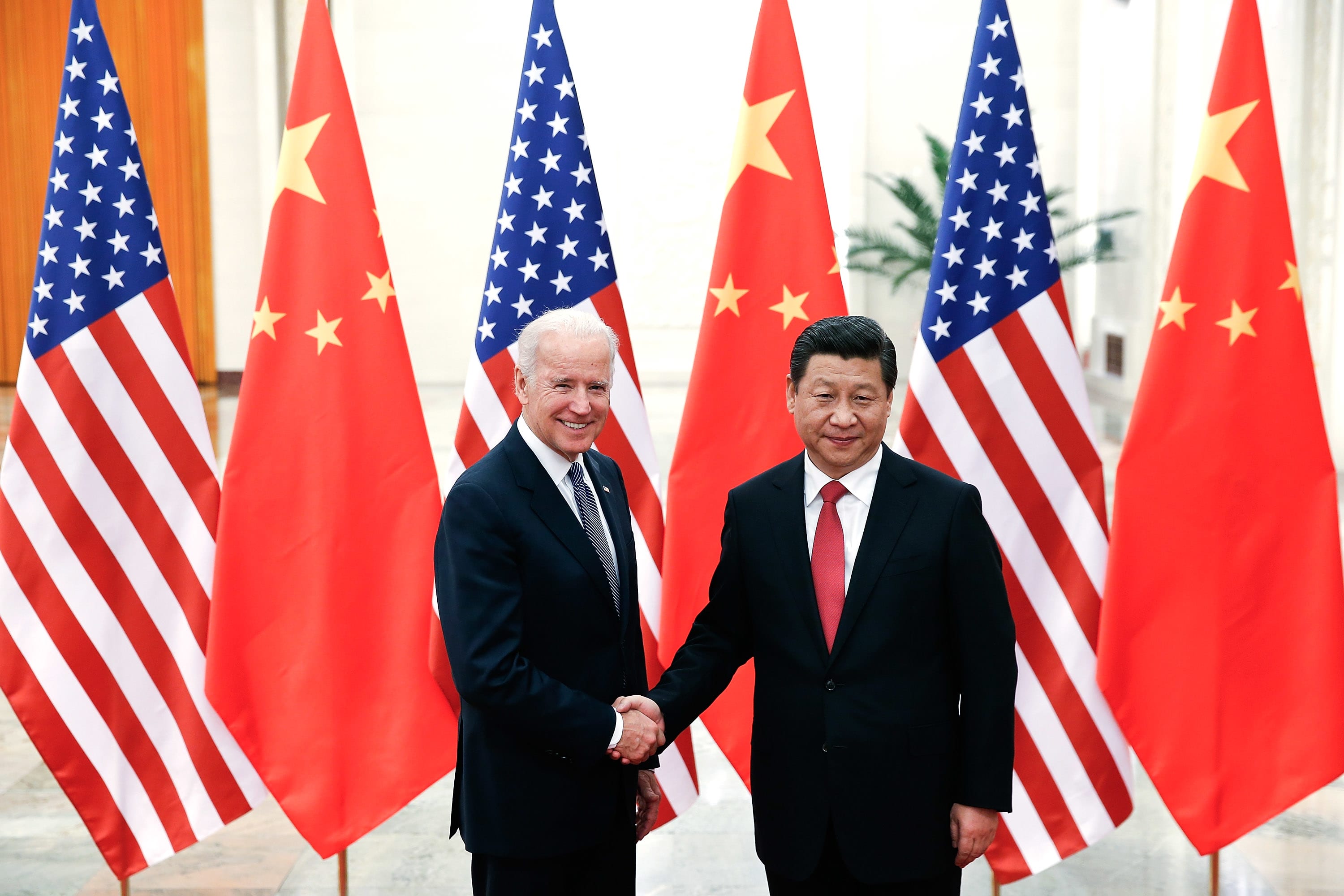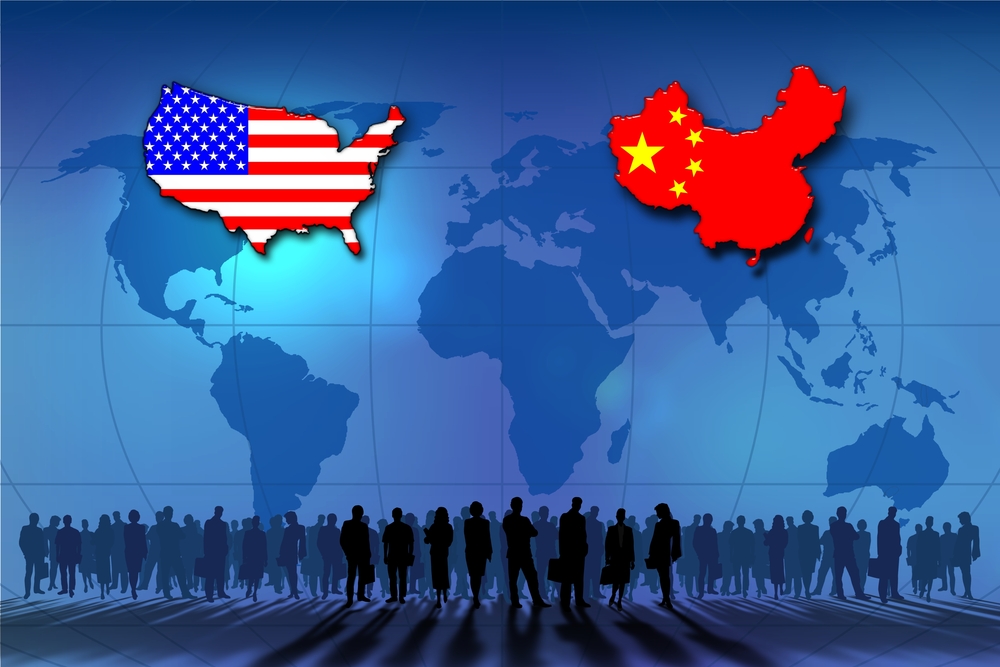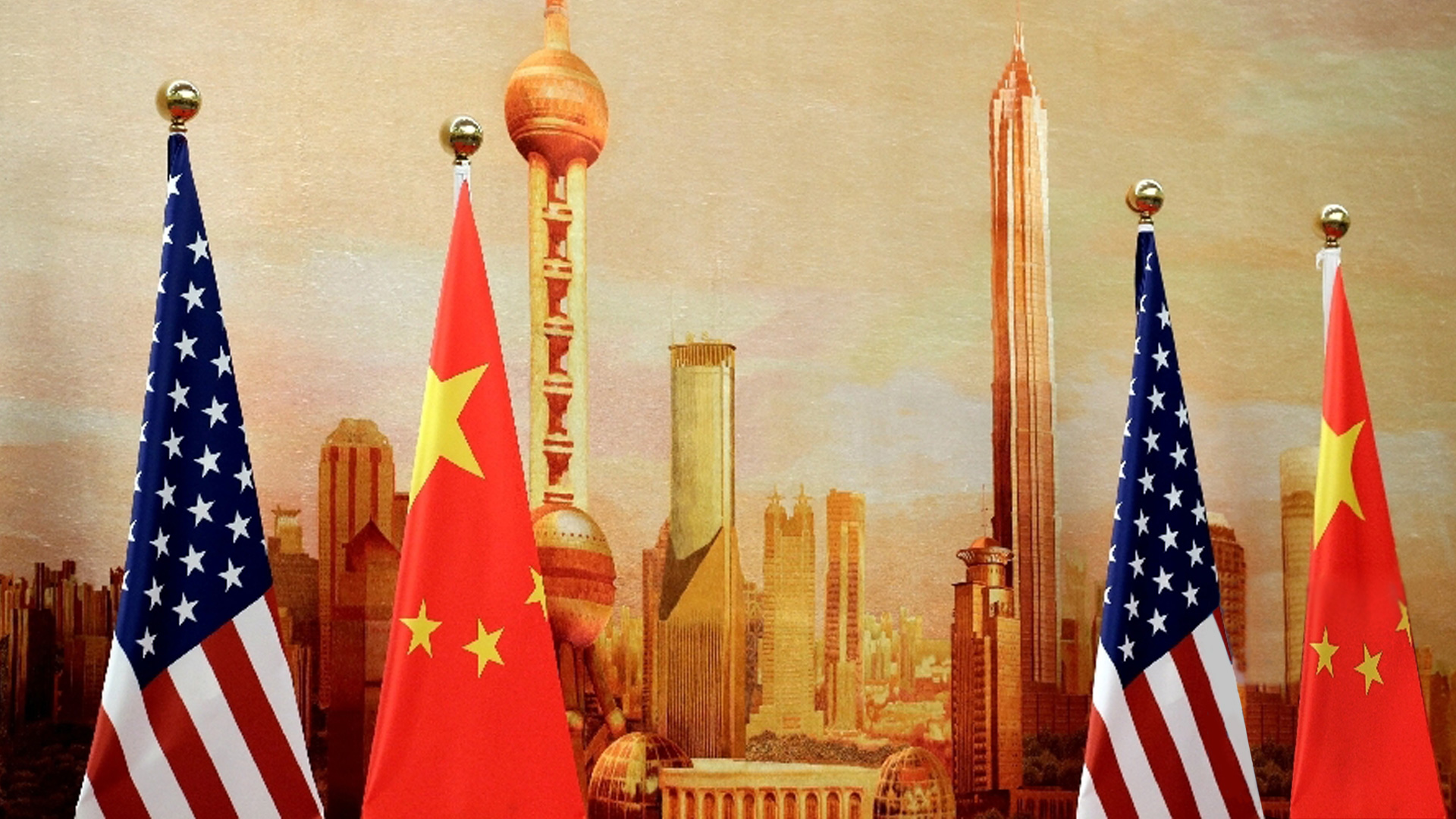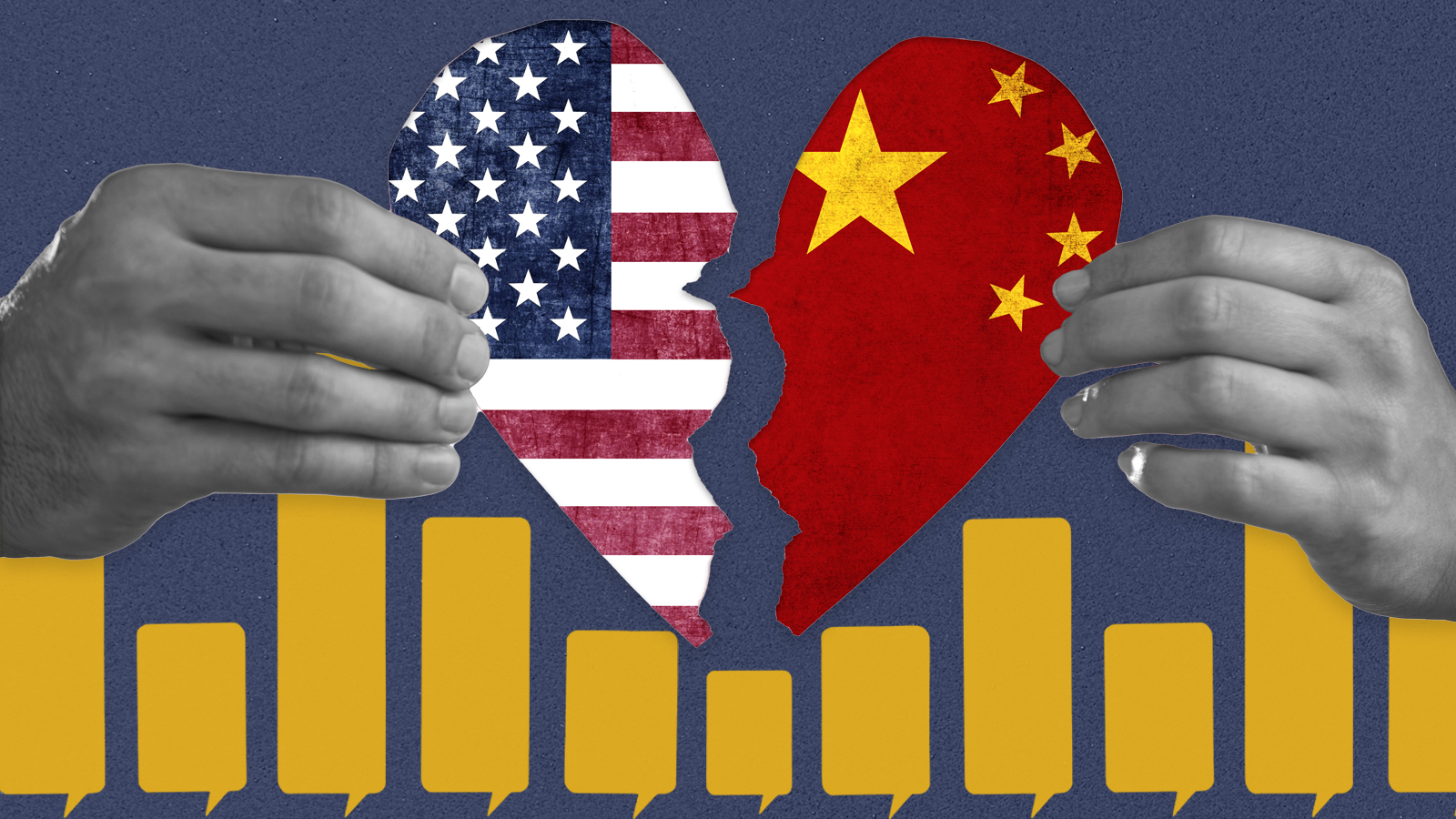As America China Continue to Lock Horns,’ It Is The American Companies That Are Feeling The Heat; Why Are American Companies Reluctant To Exit China?
For decades, China held an irresistible allure for America's corporate giants, promising unparalleled opportunities in a flourishing market with hundreds of millions of consumers. Executives sang praises of China as "one of the biggest opportunities" and foresaw it as the focal point of the 21st century. However, recent experiences have led these business leaders to adopt a more sober outlook. Western companies operating in China now face an array of once unimaginable challenges. The Chinese economy is grappling with internal strife, and its relationship with the United States is increasingly strained. Three years of stringent border restrictions and a commercial lockdown have left fissures that have yet to heal. In this turbulent environment, American companies find themselves in a dilemma as China's colossal $18 trillion economy presents immense potential, yet leaving it behind risks ceding ground to future global competitors.

For years, American business leaders viewed China as an enticing source of profit, celebrating its vast consumer base and predicting a future dominated by the Chinese economy. However, recent experiences have given rise to a more cautious outlook.
At the onset of the COVID-19 pandemic, the scarcity of N95 masks and vital medical supplies highlighted the United States’ heavy reliance on China for manufacturing.
The Trump administration, adopting an assertive stance towards China, gained widespread support despite potential adverse consequences. Remarkably, during the first ten months of 2020, the phrases “decouple from China” or “decoupling from China” appeared in three times as many articles as they did in the preceding three years combined.
Despite this political discourse, a significant majority of business executives are hesitant to embrace decoupling, and their reasons are easily comprehensible.
One executive aptly expressed, “We invested 13 years to establish a presence in China; abruptly withdrawing is infeasible.” This sentiment is pervasive among executives, who are unwilling to see the substantial time, effort, and capital invested in building their China operations go to waste.

With the Biden administration expected to adopt a less confrontational approach towards China, CEOs were optimistic that the decoupling issue would gradually recede; however, the same did not happen.
Companies conducting business in China now face unprecedented challenges while the nation’s economy is under strain, and its relationship with the United States is tested, resulting in a turbulent business environment.
Despite these hurdles, China’s $18 trillion economy remains too significant to ignore or exit as it would mean relinquishing a competitive edge to emerging global rivals; thus, many Western firms still view their Chinese operations as long-term investments, albeit with added risks.
Risk Awareness And Growing Concerns
Corporate leaders acknowledge the need to mitigate risks associated with operating in China, and it is a tough challenge to navigate this complex environment while equally recognizing the market’s potential.
Western businesses are grappling with numerous worries today, including police raids, substantial fines, failed deals, data transfer regulations, and expansive counterespionage laws.
Additionally, there are concerns about unforeseen events like pandemics, economic sanctions, or cross-border conflicts, known as “gray swans.” These challenges collectively contribute to the perception that China is becoming “uninvestable,” as U.S. Commerce Secretary Gina Raimondo noted.

Immediate Impact
Negative developments in China can have swift repercussions, such as the recent report of China banning iPhones for certain government employees, which resulted in a 6% decline in Apple’s stock value, erasing nearly $200 billion in market capitalization.
Economic Uncertainty
The deteriorating economic outlook in China adds to companies’ concerns, making it challenging to justify further investments.
Foreign corporate leaders have returned from China with doubts about the government’s ability to manage the economic downturn, and questions have risen about why companies should invest in China if even its private sector lacks confidence in the economy.
Hence, corporate discussions regarding China are gradually shifting toward a more cautious approach.
This shift is driven by the slowing economy, erratic regulatory behaviour, Beijing’s move towards totalitarianism, and U.S. government actions to redirect technology and investments to other markets.
Moreover, U.S. officials’ increasingly negative stance towards China further complicates matters for American companies.
Therefore, American companies must balance political scrutiny with the belief that collaboration with Chinese firms is necessary for staying competitive globally.

The Emerging Cracks
However, some companies are now adapting their business models to mitigate risk. For instance, Ford structured a partnership with China’s Contemporary Amperex Technology Co. Limited (CATL) to own and operate a battery plant in Michigan, allowing it to control technology and create jobs.
On the other hand, the lucrative pharma sector, China seeks to change how pharmaceutical companies operate by promoting collaboration with local scientists and investing in research rather than relying solely on imported drugs.
Under Xi Jinping’s leadership, China has adopted an inward-focused approach, impacting how Western companies engage with the market.
However, many companies find the idea of completely disengaging from China unreasonable due to existing operations, supply chains, and the market’s size and importance.
Still, geopolitical tensions, competition, and economic uncertainties have dampened the enthusiasm that once characterized American corporations’ approach to China.
Therefore, many multinational companies are now exploring growth opportunities in other parts of the world due to the uncertainty surrounding China’s economic trajectory.

China’s Inward Look
China continues to look inward and has adopted strategies to achieve its objectives based on three core mechanisms:
China’s “Made in China 2025” (MIC 2025) plan, initiated in 2015, emphasizes government support for mergers, equity investments, and venture capital investments overseas. This aims to reduce China’s reliance on foreign-owned technology.
In 2016, Chinese acquisitions of U.S. firms surged by 376% to approximately $55 billion; however, increased scrutiny for national security reasons subsequently reduced these deals to under $9 billion in 2017 and just under $3 billion in 2018.
Venture capital deals involving Chinese investors in the U.S. rose by 700% from 2014 to 2015, reaching nearly $11 billion in 2018; however, the U.S. government passed laws to review Chinese VC fund investments, causing these investments to nearly halve.
Subsidies and Funding
China has allocated over $500 billion through various funds to support domestic research and development in technologies and products where it depends on foreign companies.
Extraction
China uses foreign ownership restrictions, such as joint venture requirements and technology transfer demands, to extract technological know-how from foreign companies.
Detailed product and process information is often required, which differs from practices in other markets and in some instances, China goes beyond extraction to outright theft, as seen in the case of American Superconductor.
China has consistently pursued a strategy aimed at reducing its reliance on foreign technology and capabilities for over 15 years, spanning multiple U.S. administrations, including those of Bush, Obama, and Trump.
Furthermore, China envisions extending this strategy for another 15 years. Therefore, decoupling will remain a pivotal factor in the future, carrying profound implications that we delve into here for global corporations’ strategies.

American Decoupling vs. China’s Decoupling
America’s Decoupling: While widely publicized tariff disputes over the past four years have solidified the prevailing U.S. perspective on decoupling as primarily discouraging imports to protect domestic jobs and secure civil and military infrastructure, the Chinese viewpoint contrasts significantly.
From China’s standpoint, decoupling signifies a strategic shift where the emphasis shifts from economic growth to economic control. This shift centers around three core objectives:
- Reducing dependence on foreign nations and corporations for critical technology and products.
- Fostering the domestic dominance of indigenous companies.
- Leveraging this domestic dominance to enhance global competitiveness.
These objectives are often referred to as dual circulation, with the first two characterized as internal circulation and the third as external circulation.
China’s decoupling strategy was inaugurated in 2005 with the launch of its Medium- and Long-Term Plan for Science and Technology.
Impact on Foreign Enterprises
The consequences for foreign enterprises are profound. For instance, Intel currently exports billions of dollars worth of microchips to China, a market accounting for approximately 50% of global semiconductor demand. Under domestic content targets, Intel has been compelled to enhance local production. However, if China attains its market-share objectives, Intel’s revenue in China could gradually diminish as homegrown champions rise to dominance.

China’s Dominance in Manufacturing
In 2010, China surpassed the United States as the largest value-added manufacturer globally.
Challenges for Below-the-Radar Players
Smaller operations in China, especially for below-the-radar companies, face difficulties in gaining corporate attention and resources. Many foreign companies, such as Carrefour, Etam, Tesco, Amazon, Forever 21, and Uber, sold or closed their Chinese operations due to their limited impact on global revenues.
Upstream Players
Companies like Basic Fun, which rely heavily on Chinese raw materials and components, have their global production concentrated in China. China has attracted numerous upstream players, overtaking the United States as the largest value-added manufacturer in 2010 by investing in education and infrastructure.
U.S. tariffs pose risks for companies with significant production in China, potentially affecting their revenues and profits.
China + 1 Strategy
Some companies, like F-tech, adopted a China + 1 strategy, diversifying production locations to mitigate risks; however, this strategy faces challenges due to China’s skilled labour force and infrastructure advantages.
Concerns for Companies Dependent on China
Firms heavily reliant on China for their upstream operations, such as Daikin, may face challenges due to increased competition from local companies. Technology sharing can lead to domestic rivals gaining an advantage.
These companies import finished products for sale in China. Companies like Danieli and Rolex have succeeded in China’s B2B and B2C markets by focusing on distribution, marketing, and high-end retail.
Companies like Apple, Intel, and Nike generate substantial sales in China and use it as a significant base for global production, but they face challenges as China favours indigenous players, and tariffs may impact sales.
Apple may struggle in China as government support for local players grows, and tariffs affect its sales and moving production out of China presents challenges due to the country’s skilled workforce and production flexibility.
The Future of Decoupling
China and the United States are likely to continue decoupling despite lower priority for the Biden administration; still, companies must clarify their strategic intent in China and prepare for a shakeout in the market, particularly in targeted industries thereby, compelling value propositions that will be crucial for success despite both governments locked horns.
The Last Bit, The relationship between American companies and China is undergoing profound changes; the once unwavering enthusiasm for China’s boundless potential has given way to a more cautious and risk-aware approach.
Challenges such as regulatory uncertainties, political scrutiny, and economic fluctuations have underscored the complexity of operating in China.
Nevertheless, the allure of China’s market remains potent, and American companies continue to navigate these turbulent waters, balancing the potential rewards with the inherent hazards.



